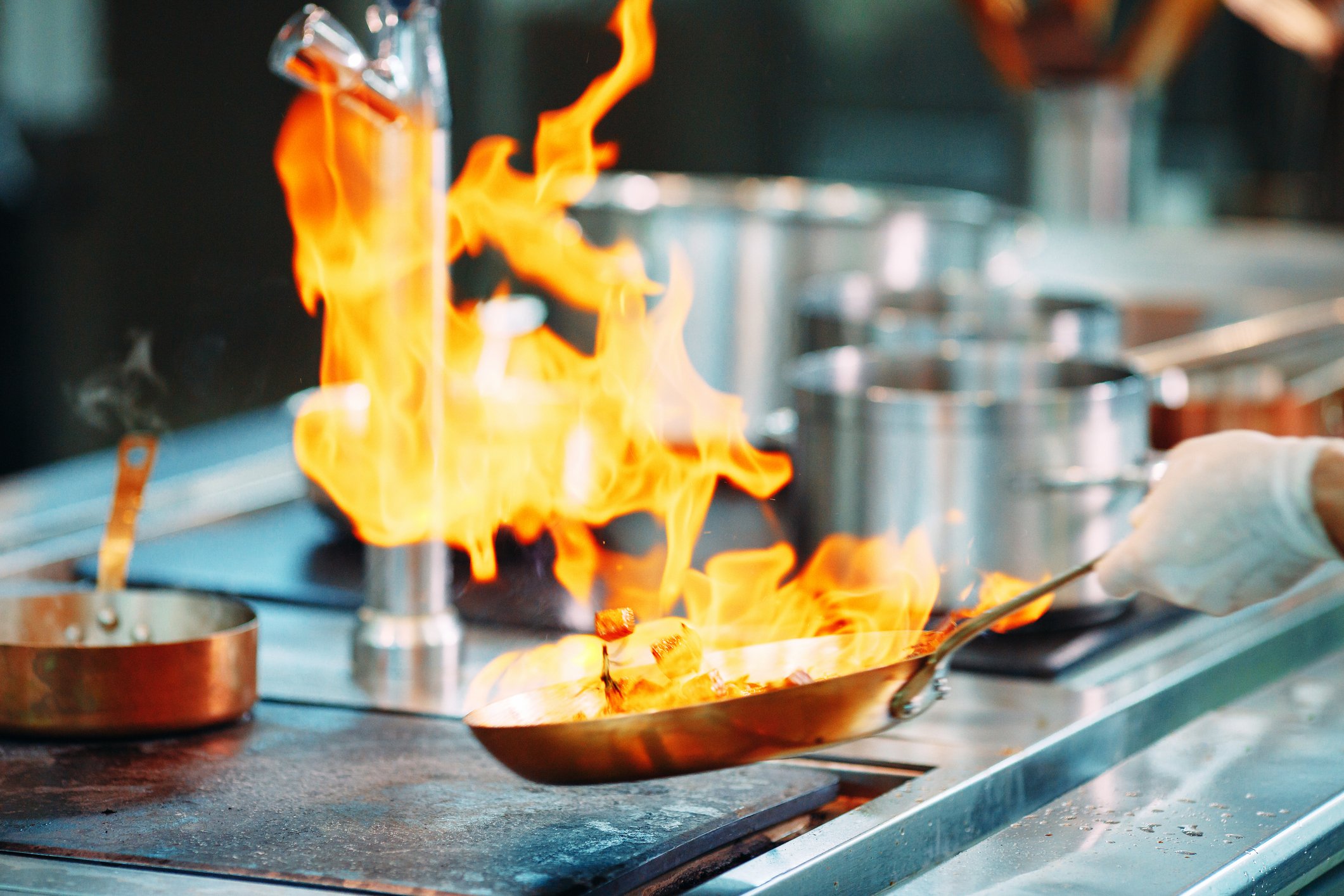The safest fire is the one that never happens, so what can commercial kitchens do to mitigate the risk?
According to the National Fire Protection Association (NFPA), there are over 7,000 restaurant fires each year, the majority of which involve cooking equipment. Following safety codes and proper cleaning procedures, as well as installing appropriate fire prevention and suppression features can help to protect restaurants against the potentially catastrophic consequences of a kitchen fire.
Adhere to Fire Codes When Designing a Commercial Kitchen
When designing a commercial kitchen, fire safety and prevention should be top of mind. The NFPA lays out regulations for ventilation control to avoid trapping heat, grease, or smoke that may lead to a fire. Commercial ranges, for example, should have at least six inches of surrounding space for airflow. These, as well as air ducts and ranges, should be regularly cleaned and maintained to avoid build-up of grease and fat.
In addition to laying out appliances and equipment appropriately, exit signs and evacuation routes should be visible and clearly marked. These areas should never be used as overflow or temporary storage, and should always be accessible in the event of an emergency.
Install a Kitchen Fire Suppression System
Considering the high rate of kitchen fires involving cooking equipment, an automatic fire suppression system is an extremely important security feature.
A fire needs fuel, heat, and oxygen in order to stay active. When a fire suppression system senses flames, it will discharge chemicals over the affected station and automatically shut off the gas or electric supply to the affected appliance. This both smothers the flames and interrupts oxygen flow, ultimately cutting off its fuel. This system effectively stops the fire, and prevents it from spreading to other stations in the kitchen.
A fire suppression system will discharge different materials based on the type of fire it detects, and must be installed and regularly inspected by a professional fire safety technician.
Make Sure Fire Extinguishers are Readily Accessible
Fire extinguishers should be easily accessible and ready to use. Commercial kitchens require Class K extinguishers, specifically designed for kitchen fires involving grease, fats, and oils. Other rooms in the restaurant, including the front of house, should be equipped with Class ABC extinguishers for any other fires that may occur, including those with paper, wood, or electrical sources.
Fire extinguishers should be clearly labelled, easily accessible, and regularly inspected in order to operate safely and effectively.
Train Your Employees to Prevent and Handle a Fire
Properly trained employees can help to prevent a fire through appropriate cleaning and maintenance procedures, and will know how to properly react to a fire, should one happen anyway. This training should cover the use of a fire extinguisher, understanding how and where to store flammable liquids properly, and assigning daily cleaning tasks to avoid fire hazards in the kitchen.
These cleaning tasks should include disposing of dirty rags and used cardboard boxes, putting away paper products, and keeping boxes and food away from hot cooking equipment. Daily cleaning minimizes grease in the kitchen, including on walls, ranges, grills, fryers, and exhaust hood systems. The kitchen should also undergo a regular thorough cleaning and sanitization.
Kitchen managers should ensure that all employees are properly trained in the restaurant’s fire safety procedures, and are familiar with emergency exits by conducting regular fire drills.
Ensuring Fire Safety in a Commercial Kitchen
With proper preventative safety measures, commercial kitchens can keep the risk of fire at bay. A clean kitchen with a properly ventilated layout will provide a safe space for kitchen staff to work, while also offering automatic safety features in the event a fire does start. Appropriate safety measures and a well-trained staff will help to mitigate fire dangers, limiting risks to people and property.








